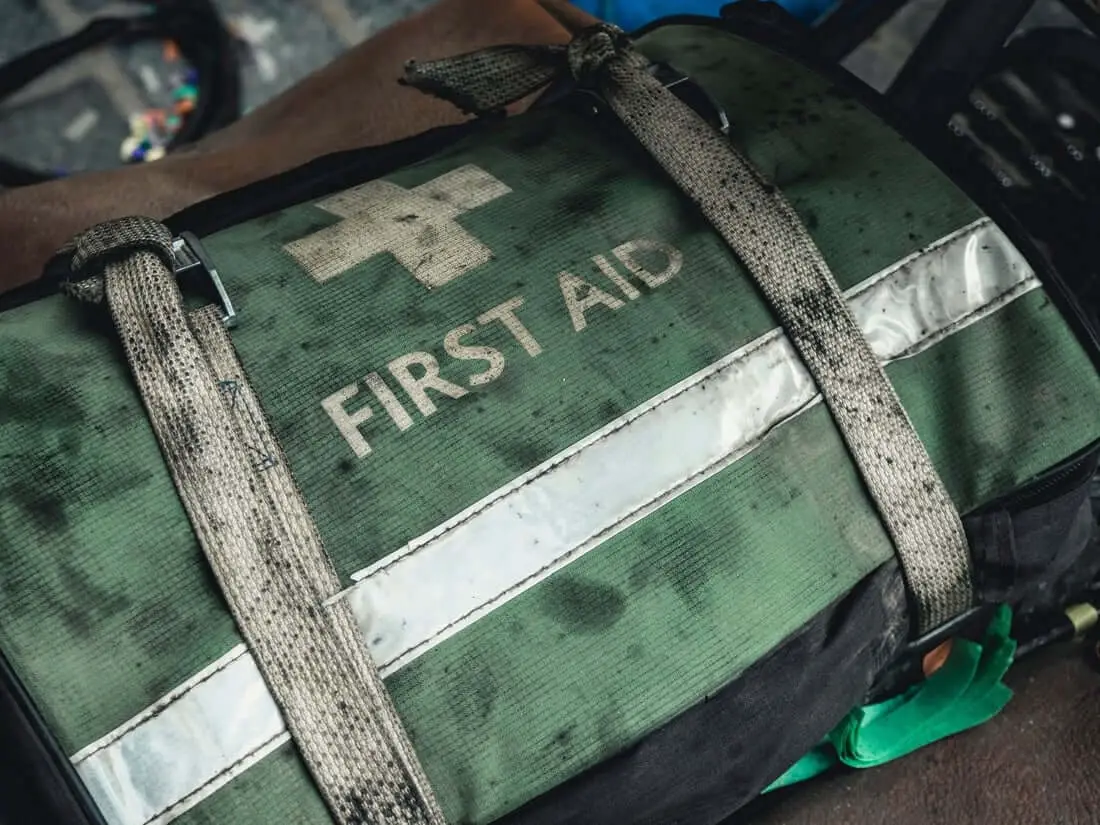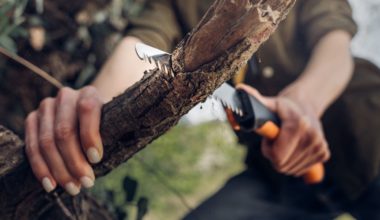If you’re looking to set up the ultimate prepper first aid kit, then you’ve come to the right place. Having a smart kit that’s stocked with crucial supplies (and not unnecessary fluff) is a must if you want to be truly prepared.
The crazy thing is that there’s a ton of misinformation and floating around when it comes to prepper first aid kits. Discrepancies in what medical supplies you should include and too much of an “over-equipped” attitude mean it can be hard to find out what you really need.
That’s why it’s a good idea to know what kind of supplies you should include in a prepper first aid kit so you can build one yourself. This will also help you customize a premade kit too if you want to make adjustments or improvements over time.
Whether you’re SHTF survival prepping or you simply want a kit to carry with you on outings, this guide will dig into the essential supplies you need and share some done-for-you kits that you can buy to save time.
Table could not be displayed.Table of Contents
List Of Supplies To Add
There’s a long list of potential supplies you can choose from when building a prepper first aid kit.
But this is partly what gets people into trouble.
There are so many options out there that there becomes an obligation to have everything, instead of the things you need most. The size of your kit and how convenient it is to bring around is all part of this, so a massive duffel bag means you’ve missed the mark.
The trick is to include things that are either downright essential (bandages and gauze) or have a variety of uses (paracord). This will help you keep your kit tidy without losing out on effectiveness.
With that being said, let’s go over the big list of supplies first. This will help you see what choices you have and give you plenty of options if you want to customize your kit.
Priority Supplies For Your Kit
- Ace bandages
- Abdominal pads
- Silk medical tape roll
- Benadryl – always good to include even if you or your party doesn’t have any known allergies
- Imodium – highly underrated
- Triangular bandages
- Saline eye drops
- Rolled gauze
- Butterfly bandages – useful for deep lacerations
- Safety pins – good for keeping dressings and bandages in place if you need to get creative
- Moleskin – versatile
- Advil or Ibuprofen
- Gloves – these will help you stay clean and safe when treating wounds
- Gauze pads
- Trauma shears
- Needle & thread – stored in isopropyl alcohol
- Wound irrigation syringes
- White petroleum jelly or Vaseline – very versatile (keep in a small container)
- Chest seals – necessary for sucking chest wounds (more on that here)
- Antibiotics – Bactrim or Doxycycline
- Thermometer
- Aspirin
- Nasopharyngeal airway – 28 FR
- Z-fold gauze
- Hydrocortisone cream
- Tweezers – always useful for wound care
- A reference guide – this will make sure you’re doing things the right way and don’t make mistakes
- SAM splint – a portable and convenient splint option that survivalists love
- Pressure dressing – a must-have for wounds on the arm or leg
- Caffeine pills – good for situations where you need to stay awake and get to your destination or keep watch
- Coban roll – an easy-to-use wrap for limbs that won’t come off easily
- Plastic cling wrap – ideally two inches wide
- Tourniquet – you can make your own with other materials/objects but these are easy to store and do the best job
- Acetaminophen aka Tylenol
- Emergency blankets – another essential inclusion
- Band-aids – duh
- Pepto-Bismol pills – easier to store than the liquid you get in stores
- Miconazole – for treating fungal or yeast infections
Additional Supplies
- Kelly clamps – curved and straight to allow for flexibility when removing objects from wounds or holding tissue in place
- Alcohol pads – necessary for keeping your hands and other instruments clean and sterile for future use
- OPAs – these are for oral airways that stop the airway from closing completely. Good for buying time until Benacryl or an epi-pen is in their system.
- Vitamins (multi and vitamin C) – good for fighting off micronutrient deficiencies if you’re in a situation where you might not be getting the most balanced diet
- N-95s masks – some preppers like to have these in their kits in case polluted or dirty air comes about as the result of a SHTF scenario
- Antiseptics – always a smart thing to include. Including different kinds will make for a more future-proof hygiene approach.
- Cotton sheets – lightweight and versatile
- Dental filling material – not something you want to deal with but always smart to include
- Floss – for keeping tooth issues at bay
- Dermabond or super glue – a variety of great first aid benefits
- Gatorade and rehydration tablets/mixes – good for keeping your core electrolytes up especially if you’re exerting yourself for a prolonged amount of time.
- Eye pads – for keeping an eye wound protected
- Antibiotic ointment and cream – if you want to address a specific area without putting antibiotics in your whole system
- Dental extractors – this is another piece of gear in your prepper first aid kit that you should learn how to use first
- Snake bite kit – better than nothing if you can apply it fast enough
- Sutures – good if you know what you’re doing (we recommend doing taking a class to get more comfortable with this)
- Re-useable GEL packs – for heating and cooling
- Aloe vera – useful for treating burns that commonly occur outside in nature when exposed to the sun or feisty plants
- Steri strips – extremely useful stitches alternative when in the field
- Wool blankets – these take up more room than an emergency blanket but can be a useful addition if you have space
- Claritin – smart inclusion for allergies
- CPR masks
- Ammonia inhalants – helpful for keeping people awake or perking yourself up if you’re trying to push through some fatigue and get to your destination
- Hydrogen peroxide – this has multiple uses but is most commonly called upon for cleaning a wound the first time. You can also use it as a mouthwash when necessary.
- Dental mirror – great if you need to address any tooth issues
- Paracord – awesome multipurpose tool that you can use for just about anything
- Tapes – DUCT, adhesive, and paper tape are all good options. Can have other helpful uses if you need to build a long term survival shelter as well.
- Quikclot or Celox – these are clotting powders that can quickly keep a nagging wound at bay so you can keep moving
- Eye cup – for washing
- Scalpels – #10, #11, #15 are the best choices
- Epi-pen – no-brainer especially if someone in your party has allergies. Fairly small so we like to include it regardless since you might not be able to rely on traditional medical attention and time is of the essence.
- Antibacterial soap
- Skin stapler/remover and Adson forceps – it’s smart to learn how to use these properly before you rely on them outside
- Athlete’s foot powder – it’s better to not rely on this by practicing smart foot care, but can be useful
- Universal cervical collar – a bit more sturdy than some of the makeshift options
Already Assembled Prepper First Aid Kits
While the list of supplies above is definitely something you should review, a lot of the time it’s more convenient to just buy a prepper first aid kit that’s already been assembled. This saves you time since you don’t need to buy everything individually.
For the sake of convenience and preparedness, we recommend getting a kit and then customizing it. That way you’ll have a good starting point and can add additional supplies to make it the best possible fit for your situation.
Below we list the done-for-you prepper first aid kits we like. Our team at TEP all own at least one of these. They’re a great thing to store at your bug out location as well.
1. Large Stocked First Aid Trauma Bag By Lightning X
This is our favorite prepper first aid kit for a number of reasons. Not only does it have pretty much everything you could possibly need already in the kit, but the quality of the supplies is top-notch.
The same thing goes for the bag. Lightning X does not mess around when it comes to the products they put out, and this kit is no exception. Water-resistant nylon and straps make up the base of this bag which means it’s about as durable as it gets.
In it, you’ll find things like pads, bandages, oxygen masks, splints, eyewash, wipes, and more. While there might be a few extras you’ll want to add to the kit later on, the number of supplies you get for such a reasonable price really makes this a smart buy.
2. Comprehensive Premium First Aid and Emergency Medical Kit by Surviveware
This is a great prepper first aid kit was designed by adventurers to include everything you could need in case of an emergency in the outdoors. It’s even a registered FDA Medical Device as well as FSA/HSA eligible.
- Two options let you choose the size and supplies you want in your first aid kit
- Registered FDA Medical Device
- 600D Polyester material is water resistant and rip resistant
- MOLLE compatible mounting system
Surviveware gives the option of a mini 100-piece first aid kit or a larger 200-piece first aid kit that includes the bonus removable first aid kit. Along with the basic essential supplies, the mini kit includes a removable CPR pouch and a First Aid Guide, while the larger kit also includes an 18-inch SAM splint and an emergency blanket.
The quality of the case is also great, which is an important aspect if you plan to frequently carry this kit with you on outings. It is made from high-quality, rip resistant 600D Polyester that is both water and rip resistant. The inner compartments are labelled to make organization easy, and the removable MOLLE-compatible straps, snaps, and advanced mounting system with D-rings makes it easy to carry and attach any way you want.
3. Complete Trauma First Aid Kit By MFASCO
This is a really underrated prepper first aid kit by MFASCO. It comes with pretty much all the essentials, but at a very affordable price point. While a lot of the other kits you’ll see get pricier, the quality of this product makes it the best value buy without a doubt.
- Kit has everything needed to address first aid emergencies plus extra storage
- Durable build can be relied on no matter where it’s used
- Supplies are grouped based on probability and size
- Powerful reflective strips have multiple uses
All of the basic supplies that you would expect are included in this kit. To go along with it you get things like burn gell and sting kill wipes that can prove helpful for specialized medical situations. It even has a blood pressure cuff!
We really like that the bad itself is reflective. This means if you end up needing to signal for help you can simply place the bad in an area that gets some sun and let it do the rest.
If you’re looking for a prepper medical kit that won’t break the bank and still get the job done, look no further than this one.
What To Look For In A Kit
When it comes to picking out a prepper survival kit that’s already been assembled, there aren’t many factors to consider.
However, the things you need to look for matter a lot.
While a lot of people start looking at how many different supplies the kit has, that’s actually the wrong approach. The reason for this is that a wide variety of low-quality supplies is far worse than a smaller batch of high-quality ones.
All of the supplies on our list are relatively affordable individually, so if you want to customize your kit to cover everything you need that’s always an option. This means you could get a kit with 30 high-quality pieces of medical supplies and expand on it, instead of getting tricked into buying the kit with 60 pieces of garbage.
Once you know that the quality is something you can rely on, then you can look at what’s included. Some of the basics (like gauze) should be included in every kit, but there are other things you might want to add or remove based on your situation.
This is something that’s entirely up to you, so our only piece of advice is to think long and hard about what you might need. Personal medical needs plus the area you’ll be needing the kit are the two main things to consider.
After you’ve done all that you can think about the price. We’re not a big fan of bargain shopping when it comes to something as important as a prepper first aid kit, because you can’t put a price on safety.
However, if there are two great kits and one costs less than the other that can be a good tiebreaker.
Conclusion
Now that you know the essential supplies to include in your prepper first aid kit (and some convenient “done-for-you” options) it’s time to stock up.
Do some thinking about what’s best for you and what specific supplies you might need. While some apply to everyone, others are a bit more specialized.
This kind of preparation is what will keep you safe when things go wrong. Smart habits and planning is the mark of a survivor, and that applies to first aid kits too!




